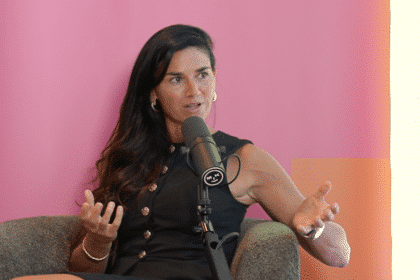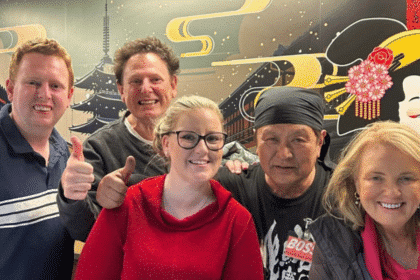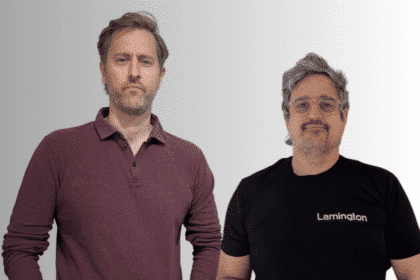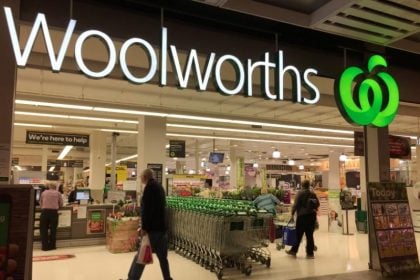Mailchimp’s FWD conference in Sydney last week represented an exercise in distinctiveness as much as a meeting of minds discussing the finer points of email marketing.
Taking over Doltone House in Sydney, the event stuffed several hundred guests into the venue to hear from marketing luminaries including Canva’s CMO Zach Kitschke, Jeremy Jones, global head of creative at Mailchimp’s internal Wink agency, Neil Patel, co-founder of NP Digital and Professor Byron Sharp from the University of South Australia’s Ehrenberg-Bass Institute.
And we do mean stuffed. At more than one point, extra chairs had to be sourced to get everyone seated. When actress and comedian Rebel Wilson took the stage post-lunch, we had to stand at the back.
“For us, it’s another opportunity to show our intent in the market,” Anthony Capano, Mailchimp’s regional director for APAC told B&T.
“We’ve been serving the Australian market for over 20 years and we’ve got hundreds of thousands of customers in this market but we didn’t have boots on the ground. Events like this show our intent for this region and that includes having a local team to work with local brands.”

Since putting boots on the ground in Australia early last year, to borrow Capano’s phrase, Mailchimp has seen an uptick in business.
“The power of the Mailchimp brand, and the product, has been in this market for many years. But now people have gravitated to the fact they can work with someone in the market. That sounds simple… but for this market, service is vital,” said Capano.
Having a brand as powerful as Mailchimp’s is certainly an advantage to building a new business. But, as Sharp explained, it’ll help keep customers. Marketers from other brands would do well to keep Mailchimp’s success with its top-of-funnel brand campaigns in mind when pursuing the en vogue hyper-personalised marcomms.
“So many predictions go wrong. These are the sort of things they say: ‘Faster,’ ‘deeper,’ ‘tailored,’ ‘dynamic,’ optimal’, the sort of words that you hear at conferences like this all the time,” said Sharp.

“In the 1940s, we were promised shoes that would fit perfectly. Did that happen? There are some shoes stores out there that will actually scan your foot, do walking tests and they’ll tell you about the shoes you should have. What do you think the market share of those shoe stores is? One per cent? No way, more like 0.001 per cent.
“We’re also told that we’re going to have perfectly timed, relevant ads. Has anyone an ad recently that they thought that just has completely nothing to do with me?”
In essence, Sharp explained, most buyers of products or services in any category are extremely light buyers. Remaining top of mind, rather than meeting a buyer with a message with perfect, to-the-minute timing is better. That extends to B2B, too. Not just B2C.
“There’s one thing that’s different for B2B. You get a more extreme Pareto because in consumer marketing, one person can eat a lot more than another but not that much, right? A bigger household can buy more of X than another but not that much. In business you can have one business with a million employees and another that has two employees, so you get a bigger spread,” Sharp explained.
“The really tough thing about B2B is that you can’t just stick an ad in the newspaper or on the TV… it’s really expensive because 99.9 per cent of the people are not the people you want to reach. There’s n0 media for you. It takes time, that’s why you send sales people out but it’s the same principle, you need those sales people to stop visiting the same regular customers and go and find new ones. The battle to extend your reach is enormous.
“In Australia there’s four big accounting firms. But there’s thousands of little accounting firms who would like to be big accounting firms. It’s really hard. Once you get there and you’ve built physical and mental availability, you’re almost unassailable. That’s the thing about B2B. It’s much harder.”
There are, however, a few notable exceptions of B2B firms with impressive, expansive marketing than has nailed mental availability—including Mailchimp.
Part of the reason for that is Mailchimp’s almost B2C approach to marketing. It has advertised during the Super Bowl, for instance, and actively pursued small to medium-sized businesses before turning its attention to the big boys. Jones even described its brand as “quirky” during a panel discussion on the day.
For Capano, however, being easy to spot among a sea of B2B sameness is half the battle. He described the brand as “absolutely strong” and distinctive but the diversity of its customer base shows that it has enough product differentiation to show it works.
“Yes the brand is strong, so too is the product, and the customer segments that we’re serving includes small through to large. It’s quite a unique business,” he said.
Perhaps there’s a lesson in Mailchimp for everyone.

















